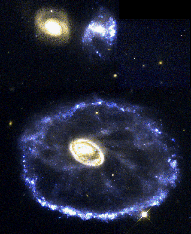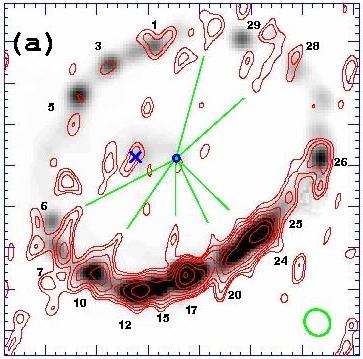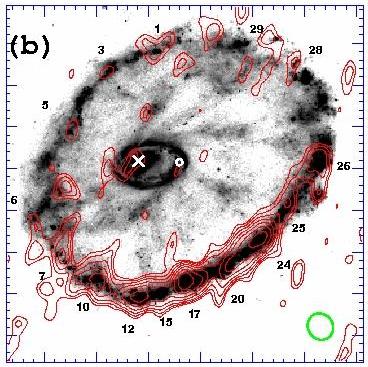


The Cartwheel is the prototype of a class of galaxies known as ring galaxies. These galaxies are formed as a result of nearly a head-on collision of two galaxies. In the process, the bigger gas-rich galaxy transforms itself into a ring galaxy. This head-on collision model is able to explain the observed appearance of the ring of the Cartwheel.
Using the Very Large Array (VLA) in New Mexico, we have detected radial filaments of 20 cm radio continuum emission pointing towards the geometrical center of the ring or spokes of the wheel. These spokes have distinct origin as compared to the optical spokes, and there is no apparent positional coincidence between these two. Radio continuum spokes represent the trajectory of past star formation in the Cartwheel. The intensity along the spokes suggests that the star formation rate in the past was lower than the presently observed values in the Cartwheel.